#Chris Bonington
Explore tagged Tumblr posts
Text
youtube
Dovedale Groove (1985)
Chris Bonington and Don Whillans
Directed by Paul Berriff
Produced by Border Television
Lakeland Rock Series (2/6)
#Chris Bonington#Don Willans#Dovedale Groove#Paul Berriff#Border Television#Lakeland Rock#rock climbing#trad climbing#1985#Youtube
0 notes
Photo
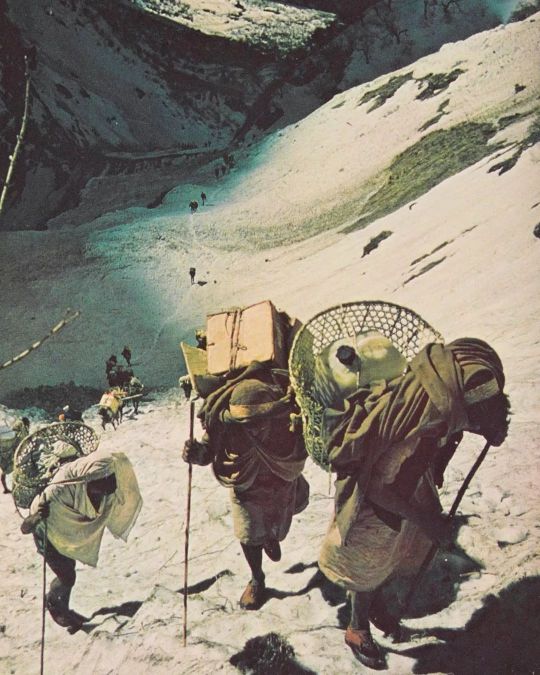
Porters, few of whom owned any footwear, were issued with gym shoes for the last leg of the approach march to the mouth of the Sanctuary. 1970. "The ascent of Annapurna by Maurice Herzog's French expedition in 1950 was one of the great landmarks in the history of moun taineering. For although his team made the attempt by the most easily accessible route, the climb represented a significant break through-the first conquest of a 26,000-foot peak. Yet the real challenge of Annapurna remained-the South Face, over 10,000 feet of rock and ice and one of the most formidable mountain walls in the world. Nothing remotely comparable had ever been attempted before. At the end of March 1970 an expedition led by Chris Bonington arrived at Base Camp in the Annapurna Basin or 'Sanctuary'. Two months later, on 27 May, two members of the team, Don Whillans and Dougal Haston, reached the summit. The seem ingly impregnable South Face had been conquered..." From "Annapurna South Face" by Chris Bonington, 1971. https://www.instagram.com/p/CpVlsBxt3AL/?igshid=NGJjMDIxMWI=
136 notes
·
View notes
Text
Pioneers and Icons of the Everest Region: 8 Trailblazing Mountaineers
Embarking on a quest to conquer the formidable peaks of the Everest region demands more than just physical prowess; it requires a spirit that defies limits and a legacy that inspires generations. Let's delve into the extraordinary lives of eight mountaineers who rightfully earned the title of legends in the realm of mountaineering.
1. Sir Edmund Hillary (New Zealand) and Tenzing Norgay (Nepal): The Trailblazers
The historic ascent of Mount Everest in 1953 by Sir Edmund Hillary and Tenzing Norgay marked the first successful conquest of the world's highest peak. Their triumph not only set the bar for mountaineering achievements but also laid the groundwork for future expeditions. Hillary's skills as an explorer and photographer complemented Tenzing's crucial role as a skilled Sherpa guide, contributing to the success of their groundbreaking expedition.

2. Reinhold Messner (Italy): The Solo Pioneer
Reinhold Messner's solo ascent of Everest without supplemental oxygen in 1980 showcased unparalleled skill and determination. His feat not only demonstrated personal prowess but also contributed to the popularization of mountaineering worldwide. Messner's status as the only person to summit all 14 fourteeners without supplemental oxygen further cements his place in mountaineering history.
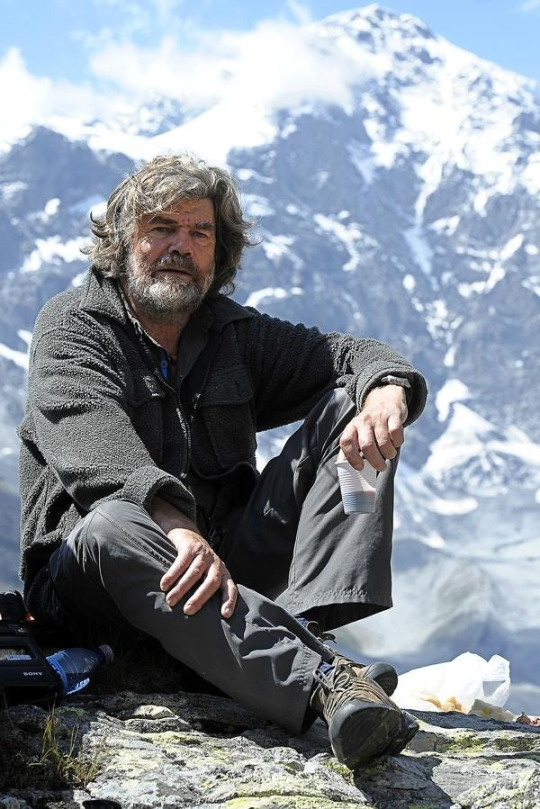
3. Junko Tabei (Japan): Breaking Gender Barriers
In 1975, Junko Tabei became the first woman to summit Everest, shattering gender stereotypes in the mountaineering world. Her remarkable achievement opened doors for countless women, breaking down barriers in the sport. Tabei's legacy extends beyond Everest, as she was also the first woman to summit all fourteen fourteeners, making her a true pioneer for women in mountaineering.
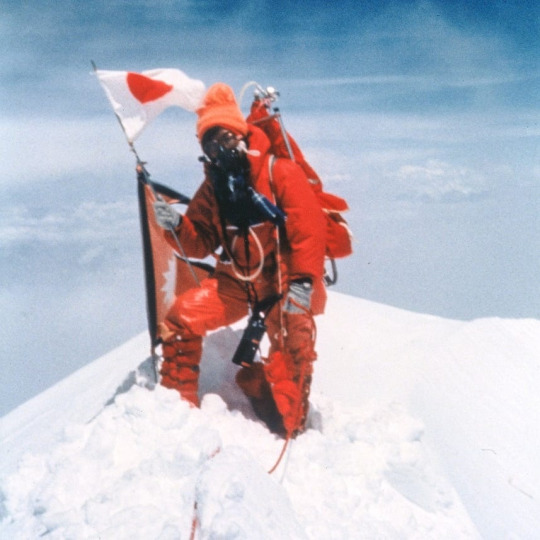
4. Sir Chris Bonington (United Kingdom): The Veteran Leader
Sir Chris Bonington's leadership during the successful Southwest Face Expedition in 1975 showcased exceptional organizational and strategic skills. His guidance through treacherous terrain solidified his reputation as a veteran leader in mountaineering. Bonington's numerous books about mountaineering continue to inspire generations of climbers.

5. Phurba Tashi Sherpa (Nepal): The Record Holder
Phurba Tashi Sherpa holds the record for the most summits of Everest (21 successful summits). His unparalleled achievements underscore the indispensable role of Sherpas in facilitating successful expeditions, emphasizing the strength and resilience of the Sherpa community. Notably, he is the first person to summit Everest twice in one year, in 2013 and 2014.
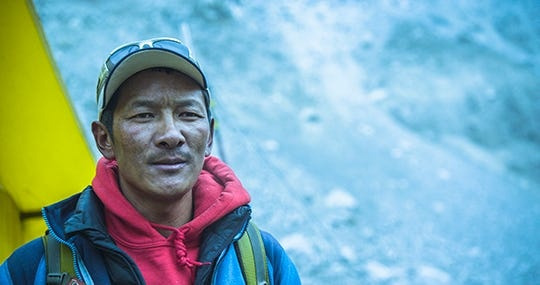
6. Hermann Buhl (Austria): The Himalayan Trailblazer
Hermann Buhl's first ascent of Mount Nuptse in 1961 showcased a trailblazing spirit, highlighting the potential for exploration beyond Everest. His decision to climb in the Himalayas without fixed ropes contributed to a broader understanding of the region's diverse terrain, enabling faster and more efficient ascents.
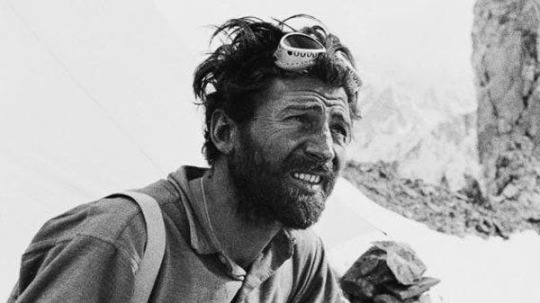
7. Pasang Lhamu Sherpa (Nepal): Breaking Barriers for Women
Pasang Lhamu Sherpa's ascent of Everest in 1993 made her the first Nepali woman to summit the peak. Her courageous feat defied cultural norms and inspired a generation of Nepali women to pursue mountaineering. Tragically, Pasang Lhamu Sherpa passed away during her descent from Mount Everest at the age of 31.
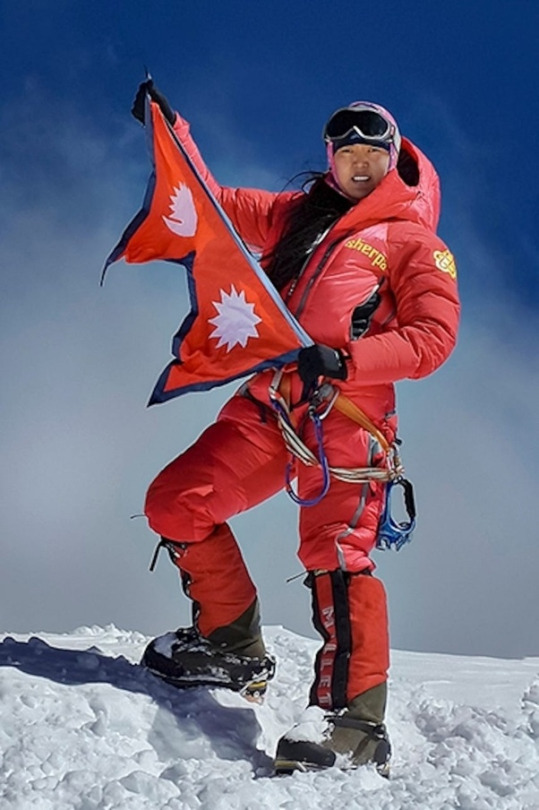
8. Apa Sherpa (Nepal): The Everester
Apa Sherpa, known as the "Everester," holds the record for the most summits of Mount Everest, with 21 successful ascents. His remarkable achievements, alongside Phurba Tashi Sherpa, solidify their places in mountaineering history. These mountaineers are not just climbers; they are architects of history, leaving an indelible mark on the Everest region and inspiring future generations to reach new heights. If you also aspire to live the dream of summiting Everest, consider starting with the Everest Base Camp Trek or Everest Base camp helicopter tour.
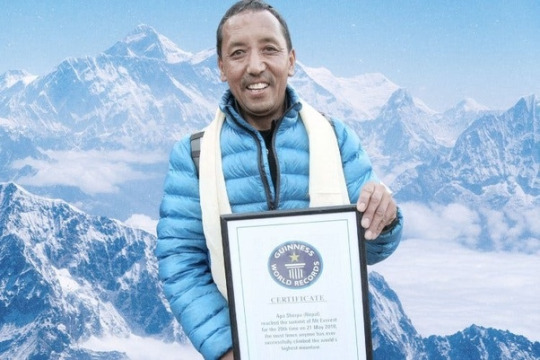
1 note
·
View note
Text
"I look at climbing not so much as standing on the top as seeing the other side. There are always other horizons before you." -Chris Bonington
0 notes
Photo

Leah Varnell steps up to become Managing Director of Ways With Words Words by the Water reaches it’s 18th festival at the Theatre by the Lake. It has grown over the years to become a huge success and a major attraction Full story: https://www.cumbriacrack.com/2019/02/14/leah-varnell-steps-up-to-become-managing-director-of-ways-with-words/
0 notes
Video
youtube
Don Whillans & Chris Bonington climb Dovedale Groove E1 5b, Dove Crag, ...
2 notes
·
View notes
Text
Wir werfen einen Blick auf die besten Treks in Pakistan, von klassischen Basislagerreisen bis hin zu schneebedeckten Hochpass-Odysseen Nachdem ich gerade von der Wanderung zum K2-Basislager in Pakistan zurückgekehrt bin und mein Interesse am Karakorum wirklich geweckt hat, dachte ich, ich würde einige zusätzliche Wanderrouten für meine nächste Reise in dieses wunderschöne Land erkunden. Mit legendären Gipfeln, Panorama-Pässen und idyllischen Bergwiesen bietet Pakistan eine Fülle hervorragender Wandermöglichkeiten, die es mit seinen Nachbarn im Himalaya aufnehmen können. Im Folgenden erkunden wir einige der besten Wanderungen in Pakistan. In Verbindung stehende Artikel: K2-Basislager-Trekking: Ein Spaziergang zwischen Riesen im Karakorum K2-Basislager-Ausrüstungsliste Tipps für das Trekking zum K2-Basislager Everest vs. K2-Basislager: Welche Wanderung ist die richtige für Sie? Beste Wanderungen in Pakistan Alle unten aufgeführten Wanderungen befinden sich in einem sicheren Teil der Region Gilgit-Baltistan. Wie bei jeder Reise lohnt es sich, vor dem Flug die Problembereiche des FCO zu überprüfen. 1. Basislager K2 und Gondogoro La Dauer: 14 TageSchwierigkeit: Sehr schwerMaximale Höhe: 5.560m (18.241ft) Das K2-Basislager ist Pakistans Flaggschiff-Wanderung und eine der berühmtesten der Welt. Mit 8.611 m (28.251 ft) ist der K2 der zweithöchste Berg der Welt, einer von nur 14 Achttausendern und ein Mitglied der sieben zweiten Gipfel. Es stehen mehrere Varianten zur Verfügung, von denen die beliebteste eine einfache Hin- und Rückroute ist. Diese Route ist einfacher, da sie den hohen Pass von Gondogoro La vermeidet. Sie bietet auch mehr Flexibilität, da es möglich ist, unterwegs eine Reihe von Umwegen zu machen, einschließlich zum Basislager Trango Towers, sowie Optionen zum Übernachten in den Basislagern K2 oder Broad Peak , oder beides. K2 von Concordia aus gesehen Ich schloss mich einem K2-Basislager-Trek an, der mit einer technischen Überquerung des Gondogoro-La-Passes kombiniert wurde. Weitere Informationen finden Sie in den folgenden Beiträgen. K2 Base Camp Trek: Ein Spaziergang zwischen Riesen im KarakorumK2-Basislager-AusrüstungslisteK2-Basislager-Trekkingführer 2. Schneesee und Hispar La Dauer: 13 TageSchwierigkeit: SchwerMax. Höhe: 5.151m (16.900ft) Lian Deng/Shutterstock Der Biafo- und der Hispar-Gletscher treffen am Snow Lake aufeinander Die Wanderung zum riesigen Eisbecken Snow Lake (eigentlich kein See) beginnt im Dorf Askole und folgt kurz der Route zum K2-Basislager. Der Weg bricht dann entlang des Biafo-Gletschers für 65 km zur größten Gletschereiskonzentration außerhalb der Antarktis ab. Hier, auf 5.151 m, laufen der Biafo- und der Hispar-Gletscher zusammen. Sobald Sie den Pass überquert haben, führt der Weg weiter entlang des Hispar-Gletschers zum Dorf Hispar. Unterwegs werden Wanderer eine Reihe von 7.000er-Gipfeln sehen, darunter den berüchtigten Baintha Brakk, auch bekannt als der Oger. Der zerklüftete 7.285 m (23.901 Fuß) hohe Gipfel war der Ort von Doug Scott und Chris Boningtons epischer Abfahrt im Jahr 1977, bei der Scott sich nach ihrem Gipfel beide Beine brach. Glücklicherweise überlebten beide die anschließende zermürbende einwöchige Rückkehr ins Basislager. 3. Rakaposhi-Basislager Dauer: 3-4 TageSchwierigkeit: MittelMax. Höhe: 4.000m (13.123ft) Nattinee Sanchaisirikul/Shutterstock Sonnenaufgang auf dem Rakaposhi-Gipfel Das Rakaposhi-Basislager ist ein beliebter Wanderweg, der in nur ein oder zwei Tagen abgeschlossen werden kann. Wanderer werden jedoch nicht die Zeit haben, die herrliche Landschaft wirklich zu schätzen. Der 7.788 m (25.551 Fuß) hohe Rakaposhi liegt im Nagar-Tal etwa 75 km nördlich von Gilgit und ist der 27. höchste Berg der Welt. Die Wanderung beginnt im Dorf Minapin am Karakoram Highway. Der Weg steigt durch ein geschütztes Tal über Wiesen, Kiefernwälder und Hirtenweiden an. Rakaposhi bedeutet „schneebedeckt“, aber der Berg ist auch als Dumani bekannt, was übersetzt „Mutter des Nebels“ bedeutet.
Der Gipfel ist ein ultra-prominenter Gipfel – bemerkenswert für seinen außergewöhnlichen Anstieg über das umliegende Gelände. 4. Rupal Face und Mazeno La Dauer: 6-9 TageSchwierigkeit: MittelschwerHöhe: 5.400m (17.717ft) Anthon Jackson/Shutterstock Das berühmte Rupal Face des Nanga Parbat Trekker umrunden den Nanga Parbat auf diesem atemberaubenden Pfad im Schatten der berüchtigten Rupal-Flanke des Berges, die sich 4.600 m (15.090 ft) über ihm erhebt. Trekker haben die Möglichkeit, entweder zum Shaigiri-Lager hinaufzuwandern und auf dem gleichen Weg zurückzukehren oder über den Mazeno-La-Pass nach Fairy Meadows weiterzugehen. Der Rückweg ist kürzer, schneller und einfacher, während der Mazeno La Pass eine längere, anspruchsvollere Option mit einer größeren Auswahl an Aussichten bietet. Wenn Wanderer sich für den Mazeno La entscheiden, endet der Weg bei den idyllischen Fairy Meadows, wo eine Verlängerung zum Basislager des Nanga Parbat leicht angehängt werden kann. 5. Basislager Nanga Parbat Dauer: 2-3 TageSchwierigkeit: MittelMax. Höhe: 4.000m (13.123ft) Witthawas_Siri/Shutterstock Die Schönheit des Nanga Parbat täuscht über seine Gefahr hinweg Nanga Parbat ist ein erstaunlich schöner Berg. Umgeben von üppigen Wäldern und Gletscherseen ragt der Berg mit einem gewaltigen vertikalen Relief über das lokale Gelände in alle Richtungen. Aber lassen Sie sich von seiner Schönheit nicht täuschen: Der Nanga Parbat ist notorisch gefährlich. Er war einst als „Killerberg“ bekannt und ist nach Annapurna und K2 der drittgefährlichste Achttausender. Vor 1990 hatte der Nanga Parbat eine erstaunliche Sterblichkeitsrate von 77 %, was bedeutet, dass Gipfelstürmer eher sterben als überleben. Die Wanderung zum Basislager ist bei weitem nicht so einschüchternd, da es sich für einen 8.000 m hohen Gipfel auf einer relativ niedrigen Höhe befindet und leicht zu erreichen ist. Sie beginnt bei den spektakulären Fairy Meadows, einem der beliebtesten Touristenziele Pakistans, und kann entweder als Übernachtung oder als Zwei-Nächte-Trekking absolviert werden. Beste Wanderungen in Pakistan: das Wesentliche Was: Die besten Treks in Pakistan erkunden. Wo: Erwarten Sie während der Wanderungen, dass Sie in Zwei-Mann-Zelten campen und nur Zugang zu grundlegenden (falls vorhanden) Einrichtungen haben. Es gibt eine Reihe von Unterkünften in Skardu und Gilgit. Wenn Sie Fairy Meadows besuchen, empfehlen wir Fairy Meadows Cottages. In Islamabad übernachtete ich im Ramada Islamabad. Wenn Sie sich wirklich umsorgt fühlen möchten, dann ist das Islamabad Marriott eine gute Wahl, die nur noch vom extravaganten Serena übertroffen wird. Wann: Die beste Zeit für Trekking in Pakistan ist von Mitte Juni bis Mitte September, wobei Juli und August die optimalen Monate sind. Bis dahin ist Trekking noch möglich, aber bis Mitte Juni bleibt übermäßig viel Schnee auf den Pässen und Nordhängen, sodass alle Pässe über 3.000 m geschlossen bleiben. Die meisten Pässe werden bis Ende September geschlossen, wenn der starke Schnee zurückkehrt. Wie: Ich habe mich Lost Horizon Treks and Tours auf einem K2-Basislager und einem Gondogoro La-Trek angeschlossen. Lost Horizons kann alle oben genannten Wanderungen sowie maßgeschneiderte Reiserouten organisieren. Für weitere Informationen oder Buchungen kontaktieren Sie Lost Horizons unter +92 5811 455017 oder +92 5811 457974. Alternativ senden Sie eine E-Mail an [email protected]. Ich bin mit British Airways direkt von Großbritannien nach Islamabad in Pakistan geflogen. Buchen Sie über Skyscanner zu den besten Preisen. Derzeit sind nur wenige aktuelle Pakistan-Reiseführer verfügbar. Daher empfehlen wir für den K2-Basislager-Trek die wasserfeste Karakorum-Trekkingkarte von TerraQuest im Maßstab 1:175.000. Leitbild: Atlas & Boots .
#Asien#Pakistan#Abenteuer#Berge#Beste#großartige#mehrtägige_Wanderungen#Wandern_Trekking#Wanderungen
0 notes
Text
On this day in 1962 ...
Today's featured image is taken from the top of Roseberry Topping. A storm is about to smother the village of Great Ayton. I just got down in time.
… mountaineers Chris Bonington and Ian Clough become the first Britons to conquer the north face of the Eiger. The 13,040 ft. climb took them two days and was one of the fastest ever. Within three hours of reaching the summit they were back in their hotel room. Here’s what the Guardian said in their Leader column on 1 September: Chris Bonington and lan Clough yesterday climbed the north face of…

View On WordPress
0 notes
Photo

Sitting it out, watching Doug and Dougal cross the summit ice field on their way to the summit. Tut Braithwaite watching through the binoculars.
From “TheEverest years: a climber's life” by Chris Bonington.
58 notes
·
View notes
Text
British climber Sir Chris Bonington recalls his travel adventures, from Pakistan to the Galapagos
British climber Sir Chris Bonington recalls his travel adventures, from Pakistan to the Galapagos
British mountaineer Sir Chris Bonington recalls his travel adventures, from conquering an unclimbed mountain called The Ogre to cruising the Galapagos islands By Sadie Whitelocks For The Daily Mail Published: 06:17 EDT, 10 July 2021 | Updated: 06:25 EDT, 10 July 2021 Sir Chris Bonington checks in to our travel Q&A This week British mountaineer Sir Chris Bonington checks in to our travel Q&A. He…

View On WordPress
0 notes
Photo

British climber Sir Chris Bonington recalls his travel adventures, from Pakistan to the Galapagos https://ift.tt/3wxaudA
0 notes
Photo

Cumbrian climber Leo Houlding celebrates 40th with a first expedition for the next generation Cumbrian climber Leo Houlding has marked his 40th birthday by introducing the next generation of his family to the kind of adventures that he has become renowned for since he teamed up with outdoor brand Berghaus in the late 1990s. Full story: https://www.cumbriacrack.com/2020/08/05/cumbrian-climber-leo-houlding-celebrates-40th-with-a-first-expedition-for-the-next-generation/
0 notes
Photo

So #sad ...Everest legend, the first English climber and a very good friend of Nepal Sir Doug Scott is passedaway today at the age of 79. June 2019 was his last visit to Nepal when he was invited as a keynote speaker for #himalayan #travel #mart (HTM). He was a recipient of One of mountaineering's highest honours, the Piolet d'Or Lifetime Achievement Award. Doug Scott has made 45 expeditions to the high mountains of Asia. Apart from his climb up the South West Face of Everest with Dougal Haston during Chris Bonington’s #expedition of 1975, he has made all his climbs in lightweight/Alpine Style, without the use of artificial oxygen. He has reached the highest peaks on all seven continents – ‘the seven summits’. A past President of the Alpine Club and a CBE in 1994, he received the Royal Geographical Society Patron’s Gold Medal in 1999. We express our Deepest condolences. May his departed soul Rest In Peace. #rip #doug #scott #first #english #climber #passedaway #friendofnepal #hlt #express #condolence #mountains #himalaya #adventure #news #instanepal https://www.instagram.com/p/CIhqR0ZF0nb/?igshid=tge5zjz6q7og
#sad#himalayan#travel#mart#expedition#rip#doug#scott#first#english#climber#passedaway#friendofnepal#hlt#express#condolence#mountains#himalaya#adventure#news#instanepal
0 notes
Photo

A tribute to a great Mountaineer Scott was regarded as one of the world's leading high altitude and big wall climbers and is the recipient of numerous awards for his achievements. He was best known for surviving an unplanned bivouac with Dougal Haston 100 metres below the summit of Everest, without oxygen, sleeping bags and, as it turned out, without frostbite. Apart from his first ascent of the southwest face of Everest with Haston, all his other Himalayan climbs were achieved in lightweight or pure Alpine style. He pioneered big wall climbing on Baffin Island, Mount Kenya and in the Karakoram, famously on The Ogre (Baintha Brakk) with Chris Bonington, and later on Shivling in the Indian Himal. Douglas Keith Scott was an English mountaineer, noted for being on the team that made the first ascent of the south-west face of Mount Everest on 24 September 1975. In receiving one of mountaineering's highest honours, the Piolet d'Or Lifetime Achievement Award, his personal style and climbs were described as "visionary". #tomountainsibelong #mountainsandme #dougscott https://www.instagram.com/p/CIhj5AqlX1K/?igshid=48y2qarrjhrx
0 notes
Text



Please can everyone i looked up to as a kid stop dying. Please. He’ll be best remembered for the first ascent of the SW face of Everest (with Dougal Haston), ‘that bivvy’ 100m below the summit of the same mountain, and for his pioneering ‘alpine’ approach to mountaineering. But. And it’s a huge but. His contribution to The Hunt Report on Outdoor Education in 1976, and, amongst others, @teambmc @mountainheritagetrust @alpine_club @uiaamountains @americanalpine The Mount Everest Foundation, and The Climbers Club have benefitted each and every one of us that climb or walk in the mountains. Moreover his deep deep understanding and care for mountain communities, and his work with @communityactionnepal has shone a light for us all to follow. That list of ascents. Those books. All of us who sat enraptured by his re-telling of his descent of The Ogre (him with 2 broken legs and Chris Bonington with smashed ribs) in 1977 at one of his lectures. “I never had any doibt to at i would get down, i just didn’t know how i was going to do it”. RIP Doug Scott 🙏
0 notes
Photo

Memories- With the mountaineering legend Sir Chris Bonington on 3 June 2011. #Bonington #Mountaineering #ClimberExplorer https://www.instagram.com/p/CA9lWI1nR-5/?igshid=mu5i3614349c
0 notes